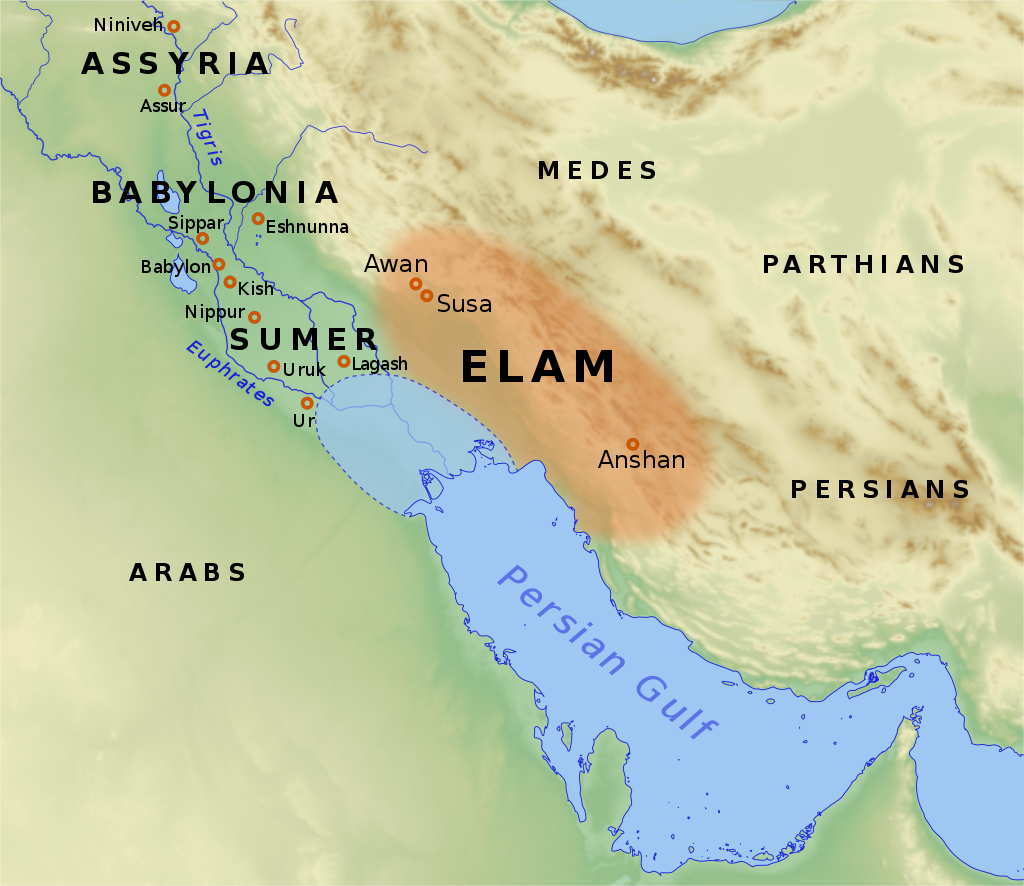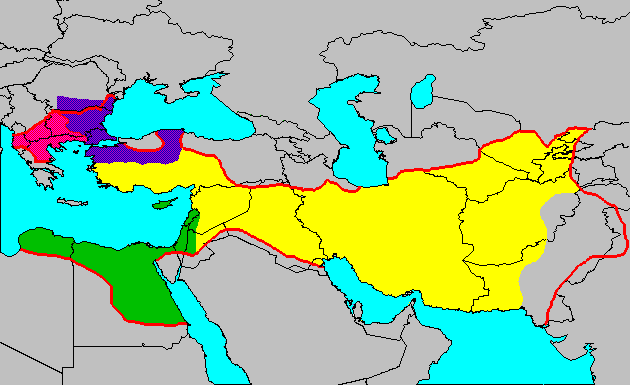Diving into Daniel: A Vision of A Ram and Goat
Daniel 8:1-8 - Another vision containing powerful animals shows Daniel the future.
“In the third year of the reign of Belshazzar the king a vision appeared to me, Daniel, subsequent to the one which appeared to me previously. I looked in the vision, and while I was looking I was in the citadel of Susa, which is in the province of Elam; and I looked in the vision and I myself was beside the Ulai Canal. Then I lifted my eyes and looked, and behold, a ram which had two horns was standing in front of the canal. Now the two horns were long, but one was longer than the other, with the longer one coming up last. I saw the ram butting westward, northward, and southward, and no other beasts could stand before him nor was there anyone to rescue from his power, but he did as he pleased and magnified himself.
While I was observing, behold, a male goat was coming from the west over the surface of the whole earth without touching the ground; and the goat had a conspicuous horn between his eyes. He came up to the ram that had the two horns, which I had seen standing in front of the canal, and rushed at him in his mighty wrath. I saw him come beside the ram, and he was enraged at him; and he struck the ram and shattered his two horns, and the ram had no strength to withstand him. So he hurled him to the ground and trampled on him, and there was none to rescue the ram from his power. Then the male goat magnified himself exceedingly. But as soon as he was mighty, the large horn was broken; and in its place there came up four conspicuous horns toward the four winds of heaven.”
Daniel 8:1-8 NASB1995
Daniel has another vision recorded in the eighth chapter, this one occurring in the third year of the reign of Belshazzar and subsequent to the vision in Daniel 7. In the vision, he finds himself in the citadel of Susa in the province of Elam (many commentators believe that he was supernaturally transported in his vision from Babylon to Susa). Daniel is standing next to the Ulai Canal, which is a river in that region. He sees a ram with two horns standing in front of the canal. The horns on the ram were long, but one was longer than the other. The ram is butting in three directions: Westward, northward and southward. The ram was dominant and did as he pleased. Here’s a map of the Elam province (in present-day Iran) that was found on Precept Austin:
While observing, Daniel then sees a male goat coming from the west over the entire surface of the earth without touching the ground. The goat has a conspicuous horn between its eyes. The goat comes up to the ram and rushes at the ram, enraged. The two ram horns are shattered and the strength is gone from the animal. The goat tramples the ram and becomes mighty. But the goat’s horn is broken and four conspicuous horns appear and point to the four winds of heaven.
Steve’s AI image (above) shows the limitations of asking for too many things for an AI image, but I think it shows the three most important factors: The ram (not necessarily the uneven horns), the flying goat with the prominent horn and Daniel observing off to the side, with a stream flowing between them.
The best commentary that I found on these verses was in Enduring Word:
A ram which had two horns: In this same chapter (Daniel 8:20) this ram was clearly identified as representing the Medo-Persian Empire, which succeeded the Babylonian Empire.
It wasn’t a stretch to use a ram to represent the Medo-Persian Empire. “Ammianus Marcellinus, a fourth century historian, states that the Persian ruler bore the head of a ram as he stood at the head of his army.” (Leon Wood) “The ram was the national emblem of Persia, a ram being stamped on Persian coins as well as on the headdress of Persian emperors.” (Lehman Strauss)
The two horns were high; but one was higher than the other: The ram was noted for the proportion of its two horns – one was higher than the other. This was an accurate prediction of the partnership between the Medes and the Persians, because the Persians were larger and stronger in the partnership. They also emerged after the Medes (the higher one came up last).
Pushing westward, northward, and southward: The Medo-Persian Empire exerted its power to the north, south, and west. It took territory but made no major conquests towards the east.
“The principal theatre of their wars, says Calmet, was against the SCYTHIANS, northward; against the GREEKS, westward; and against the EGYPTIANS, southward.” (Adam Clarke)
A male goat came from the west: In this same chapter (Daniel 8:21-22) this male goat was clearly identified with Greece and its horns are identified with the rulers of the Greek Empire.
From ancient history we know this wasn’t a strange symbol. The goat was a common representation of the Greek Empire. “Newton very properly observes that, two hundred years before the time of Daniel, they were called, the goats’ people.” (Adam Clarke)
Across the surface of the whole earth, without touching the ground: This prophetic description of the male goat was proved to be accurate regarding the Greek Empire.
The Greek Empire rose from the west of previous empires.
The Greek Empire rose with great speed (suddenly… without touching the ground).
The Greek Empire had a notable ruler, Alexander the Great (a notable horn).
The Greek Empire had a famous war with the Medo-Persian Empire (I saw him confronting the ram).
The Greek Empire and the Medo-Persian Empire greatly hated each other (with furious power… moved with rage). Some of the greatest, fiercest battles of ancient history were fought between the Greeks and the Persians.
The Greek Empire conquered the Medo-Persian Empire (no one that could deliver the ram from his hand).
The reign of the notable leader of the Greek Empire was suddenly cut short (the large horn was broken).
After the end of Alexander the Great’s reign, the Greek Empire was divided among four rulers (in place of it four notable ones came up).
The four rulers of the Greek Empire after Alexander ruled their own dominions, not the entire empire together (came up toward the four winds of heaven).
Alexander did not divide the empire among his four generals himself. His four leading generals divided it among themselves by force after his death. The four generals were:
·Cassander, ruling over Greece and its region.
· Lysimachus, ruling over Asia Minor.
· Seleucus, ruling over Syria and Israel’s land.
· Ptolemy, ruling over Egypt.
The male goat grew very great: The greatness of Alexander’s Empire was not only in its vast dominion but also in its cultural power. Alexander the Great was determined to spread Greek civilization, culture, and language across every land he conquered.
As God guided history, He used Alexander’s passion to spread Greek culture to prepare the world for the Gospel of Jesus Christ. Because of Alexander’s influence, koine (common) Greek became the common language of the civilized world – and the language of the New Testament.
So once again, this vision is of two empires (as explained later in Daniel 8): The upcoming Medo-Persian empire (recall that this is in the third years of Belshazzar’s reign in Babylon - approximately 551 B.C.- and about eight years before the fall of Babylon). The Persians were the larger and stronger in the partnership, represented by the bigger horn on the ram. The second empire is the Greek empire, first under Alexander the Great and then under the four generals who fought to divide up the empire after Alexander’s untimely death. Here’s a map of the four divisions, found on Precept Austin:
The map above shows Alexander's empire demarcated by the red lines. After Alexander died abruptly at age 32, the kingdom was eventually divided between 4 of his generals as follows:
(1) South - Ptolemy (green portion south of Israel - Egypt)
(2) East - Seleucus (yellow portion north of Israel -Syria, Babylonia, East toward India)
(3) North - Lysimachus (purple - Thrace, Bithynia)
(4) West - Cassander (pink - Macedonia)
I find it fascinating how God guided history and used the influence of Greek culture to prepare the world for the Gospel of Jesus, creating a common language and the language of the New Testament. This was supplemented by the extraordinary network available to travelers when the Roman Empire came into existence.
But there’s a lot more to come in this prophetic vision, as we will see in the next part of the vision when another little horn grows mightily. This will be in my next devotional for Daniel 8:9-14.
Heaven on Wheels Daily Prayer:
Dear Lord - The mechanisms and methods that You put in place to ensure the Gospel would be heard 600 years after Daniel are extraordinary! It is all in Your hands! Amen!
Precept Austin was accessed on 4/27/2025 to review maps and commentary for Daniel 8:1-8.
Enduring Word commentary by David Guzik is used with written permission.





